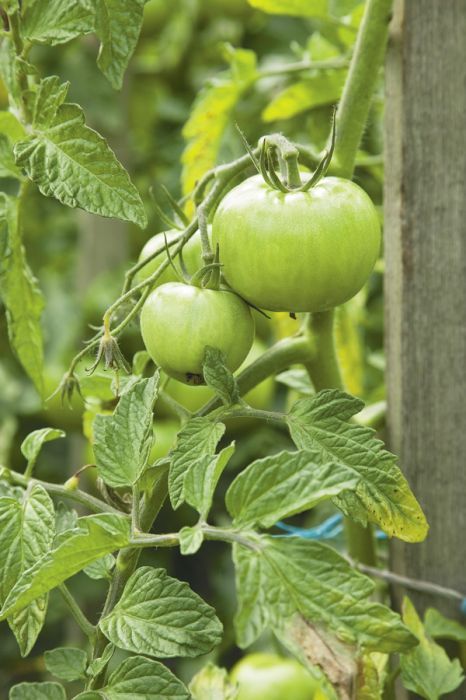Hang on, Little Tomato

By Hilary Berg, OWP Editor
Every summer, I look forward to homegrown, garden-fresh tomatoes.
After eating countless anemic — more accurately pink, almost translucent, flavorless — versions throughout fall, winter and spring, I can’t wait for summer and its red, juicy bounty.
Our other homegrown goodies — onions, garlic, carrots, rhubarb, snow peas and more — are delicious, but there is something so special about real tomatoes; and something so frustrating about growing them in Oregon.
While August has arrived, our tomatoes have not, at least not in our garden. I can see little green orbs just now starting to form, but, again, it’s August, and from what I remember as a kid in Kansas, there should be a bushel by now and a dozen BLTs already consumed.
Being nightshade plants, tomatoes prefer warm nights, which the Midwest can definitely claim. Cooler nights, like in many parts of Oregon, can really slow the ripening process. Of course, I would not trade the cool nights for steamier ones if it meant we couldn’t grow grapes.
My grandpa was a master gardener; his tomatoes were so incredible, I can’t even begin to describe the taste. Unfortunately, he passed on years ago, and it appears my father didn’t inherit his green thumb — sorry, Dad — so I am reaching out to you, OWP readers, for some serious tomato tips.
I am assuming you’ll need to know some details. Our garden’s elevation is approximately 600 feet. It’s often breezy at night. Cool, too. The soil is a compost mixture we purchase from a local supplier — we were told the mix was perfect for gardens. We water the plants almost every night, and it is completely organic, just like our vineyard. We spray nothing on the garden, except water.
Maybe that’s it. The tomatoes are still green because we are too green?
I am sure some sophisticated fertilizer would help the little guys ripen, but I wouldn’t be so comfortable eating them, and, honestly, it would feel like we were cheating. Growing tomatoes would evolve from an experience of pure pleasure to a guilty one. No, thanks.
Perhaps I need to learn some patience and hold on, like my little tomatoes are doing right now — and like the Pink Martini song says.
Being green is not always easy, but it’s the right thing to do. While results may take longer, practicing sustainability forces us to slow down and better understand the environment and our impact on it.
Being green also requires admitting mistakes and making positive amendments along the way. Like admitting defeat and buying tomatoes from a local farmers market? Exactly.












